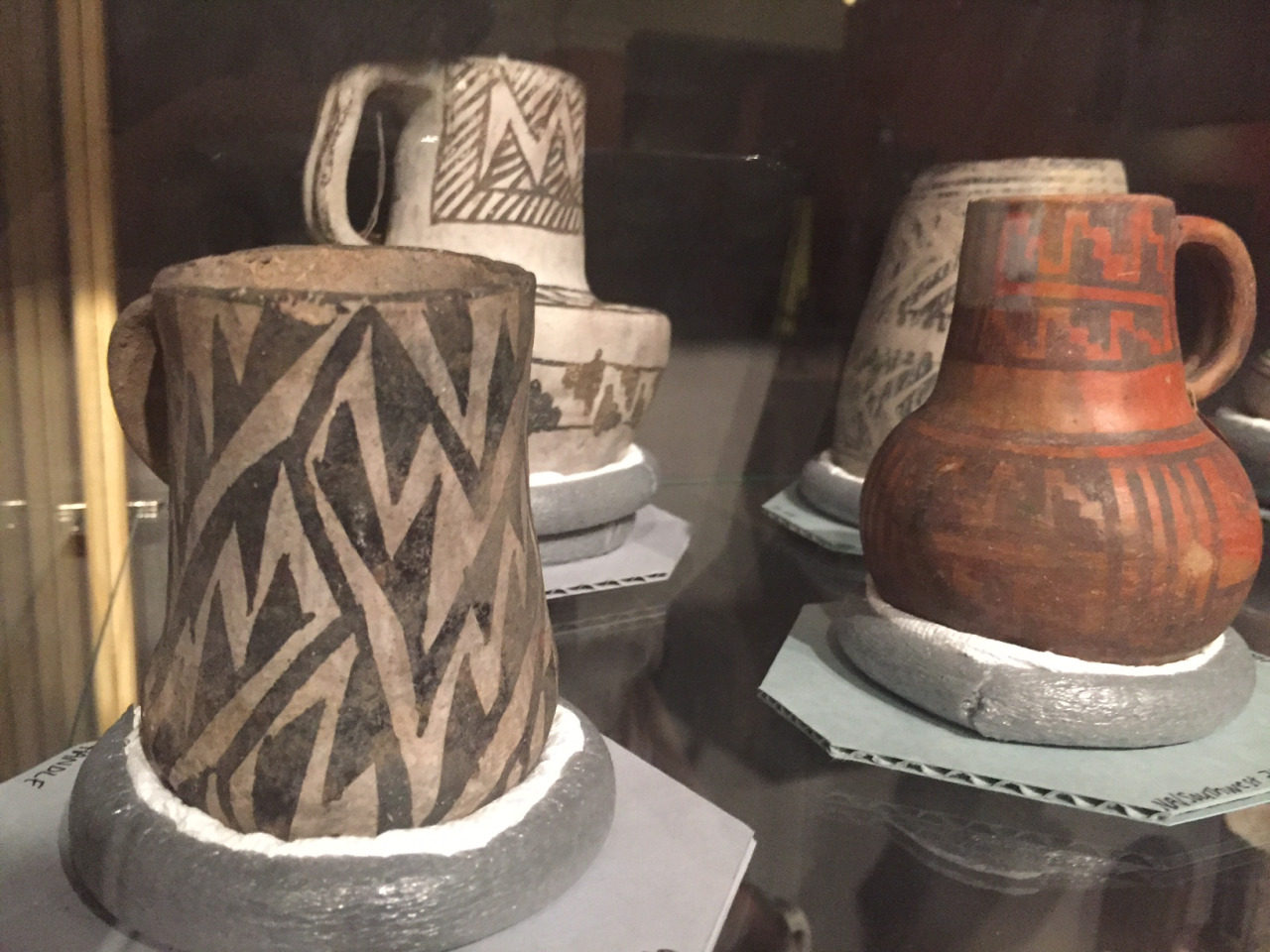
Pots from our archaeology collection on display in Discovery Basecamp, Carnegie Museum of Natural History’s new permanent interactive gallery.
Carnegie Museum of Natural History
One of the Four Carnegie Museums of Pittsburgh
Carnegie Museum of Natural History is in Pittsburgh, Pennsylvania. Many of the museum's collection specimens are from the local area, including our Botany, Invertebrate Paleontology, and Herpetology specimens. Our collections and our community often influence our work, whether that includes researching climate change, air pollution improvements from the closing of steel mills in the city, or invasive species.
by wpengine

Pots from our archaeology collection on display in Discovery Basecamp, Carnegie Museum of Natural History’s new permanent interactive gallery.
by wpengine
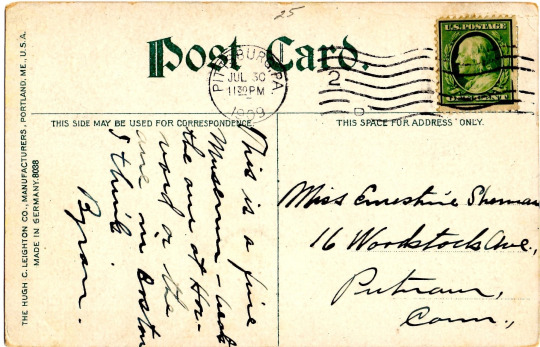
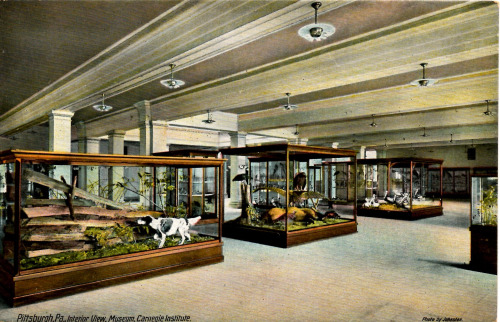
How did word get around about Carnegie Museum of Natural History before Facebook, Twitter, and Snapchat?
Postcards of course!
Steve Rogers, our collection manager of Section of Birds and Section of Amphibians and Reptiles, purchased a classic Carnegie Museum postcard that’s more than 100 years old on eBay years ago, and recently scanned and shared it in preparation for a talk he’ll give at the National Taxidermists Association meeting in Seven Springs next month.
The front of the postcard shows dioramas that include an old Count Noble exhibit that was sent to Kentucky about 15 years ago, the condor case with the elk, and the pelican case which was dismantled around 2000.
The back of the card reads…
This is a fine Museum – beats the one at Harvard or the one in Boston I think, Brian”
It is postmarked 1909, not long after we expanded the museum from the original Carnegie Institute.
Maybe our Tumblr and Facebook posts will be rediscovered 100 years from now. Either way, we’re always excited to share cool pieces of Carnegie history!
by wpengine
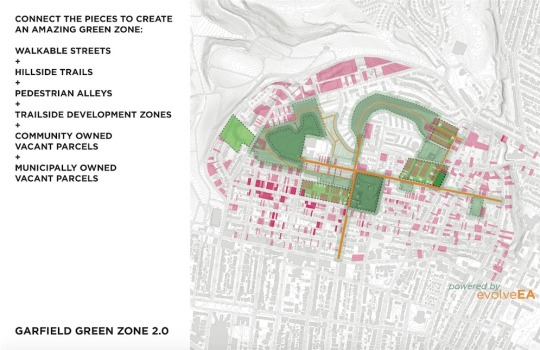
When city neighborhoods undergo change, the words revitalization, innovation, and gentrification are often parts of important conversation about how development affects neighborhood residents.
Less discussed but equally important for the quality of all life is conservation. A project that was highlighted in an article from NEXTPittsburgh this month shows an exciting marriage of community development and conservation in one of our neighboring communities – Garfield.
Community leaders in Garfield, a neighborhood in Pittsburgh’s rapidly growing east end, are discussing plans to connect vacant lots and transform them into a contiguous, community-owned greenspace.
The project, organized by the Bloomfield Garfield Corporation, would protect urban land from future development.
At Carnegie Museum of Natural History, we view local conservation as paramount to the success of Pittsburgh.
“People hear me quite frequently wax lyrical about the importance of having an experience of nature in our day-to-day lives. It’s nice to see the wealth of local initiatives that allow that to happen,” Carnegie Museum of Natural History Director Eric Dorfman wrote on his blog.
Our museum’s efforts include Birdsafe Pittsburgh, a program established by the museum and seven other local conservation organizations that researches and reduces the incidents of bird injury and death caused by birds colliding with glass windows and facades. Birdsafe’s mission is to educate the community to “make Pittsburgh and beyond a better, safer world for bids.”
by wpengine
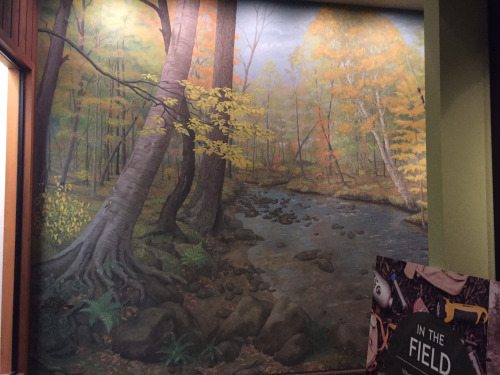
by Patrick McShea
The scene in a new mural on the second floor of Carnegie Museum of Natural History is a fall morning at Powdermill Nature Reserve, the museum’s field research station which is located some 55 miles southeast of Pittsburgh.
The view is upstream along Powdermill Run, just below the place where the stream absorbs the flow of a tributary known as White Oak Run. These waters, gathered from a portion the western slope of Laurel Ridge, eventually flow through Pittsburgh. Their path to the city, a vertical descent of some 650 feet via the meanders of Loyalhanna Creek, the Kiskiminitas, and Allegheny River, is nearly twice the length of the highway route.
As a vital element of the forested landscape, the stream provides a focal point for considering the diverse life forms supported on Powdermill Nature Reserve’s 2,200 acres.
The artists who created the mural paid careful attention to vegetation, depicting specific trees, shrubs, and grasses. They also populated the scene with a variety of creatures. The closer you study the mural the more living details you’ll notice.
See how many plants and animals you can locate and identify, then make plans to visit Powdermill Nature Reserve at any season of the year.
Curious about Powdermill? Visit on June 4 for the annual public day!
Patrick McShea works in the Education and Visitor Experience department of Carnegie Museum of Natural History. Museum employees are encouraged to blog about their unique experiences and knowledge gained from working at the museum.
by wpengine
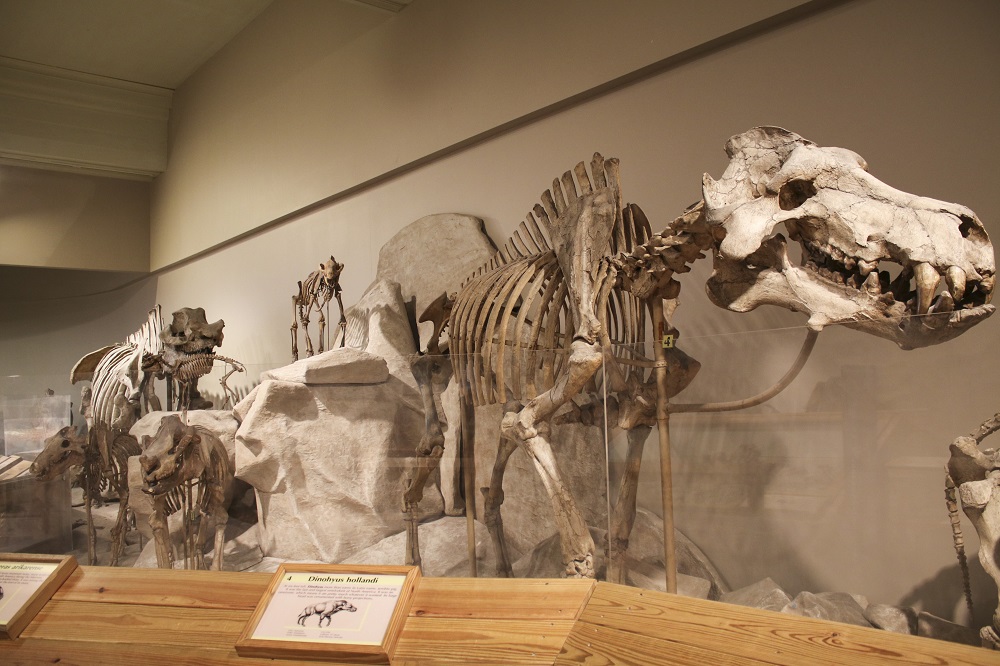
Dinohyus hollandi translated from Latin means “terrible pig.” The fossils of this frightening, 6-foot-tall omnivore were found in Nebraska and are on display at Carnegie Museum of Natural History in Pittsburgh.
(Photo by Hayley Pontia)
by wpengine
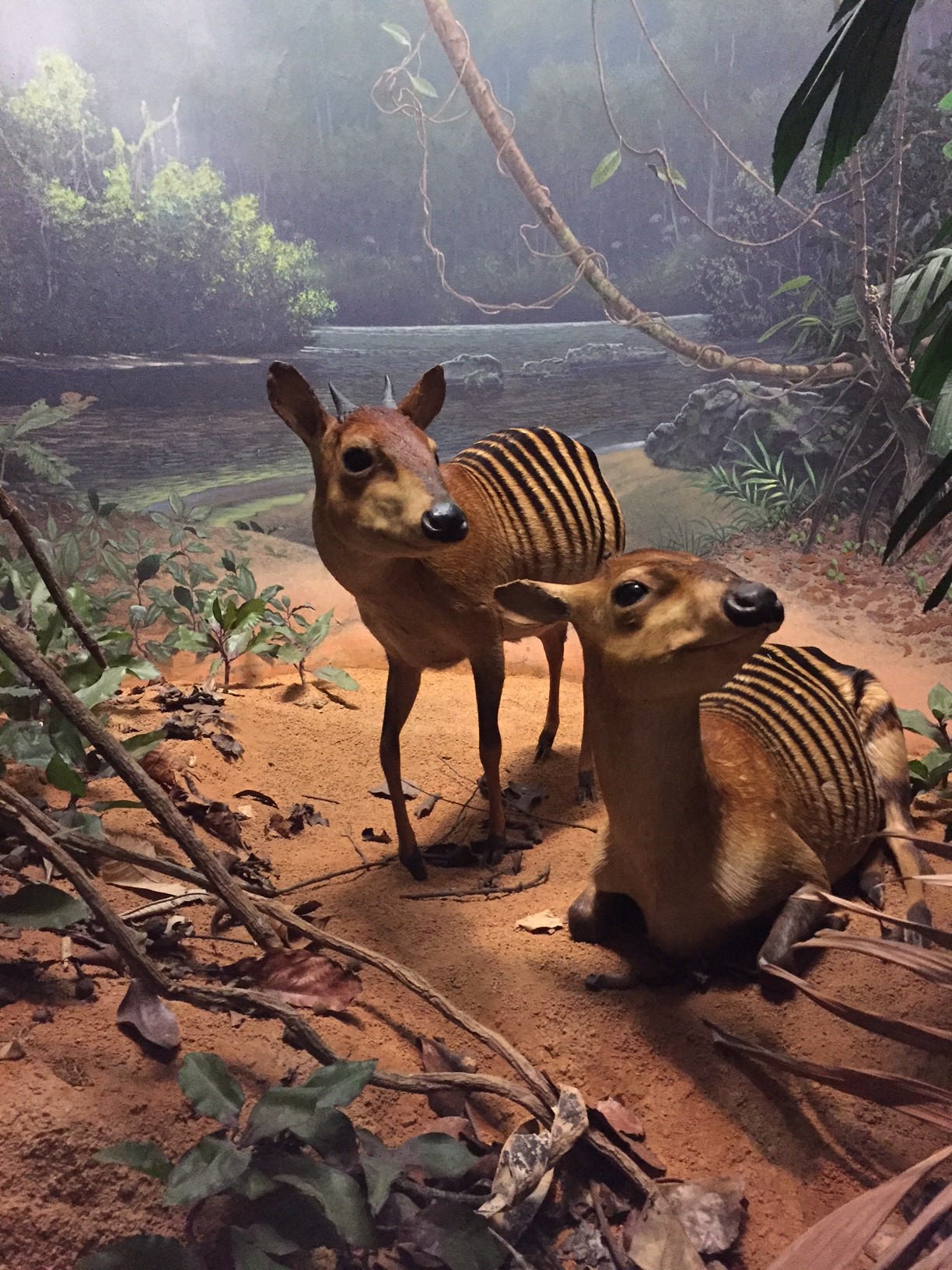
The Carnegie Museum of Natural History’s Zebra Duikers are shown in their natural habitat, the coastal rain forests of Africa in the Hall of African Wildlife.
